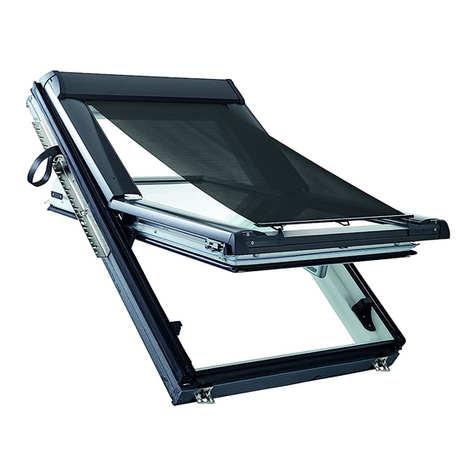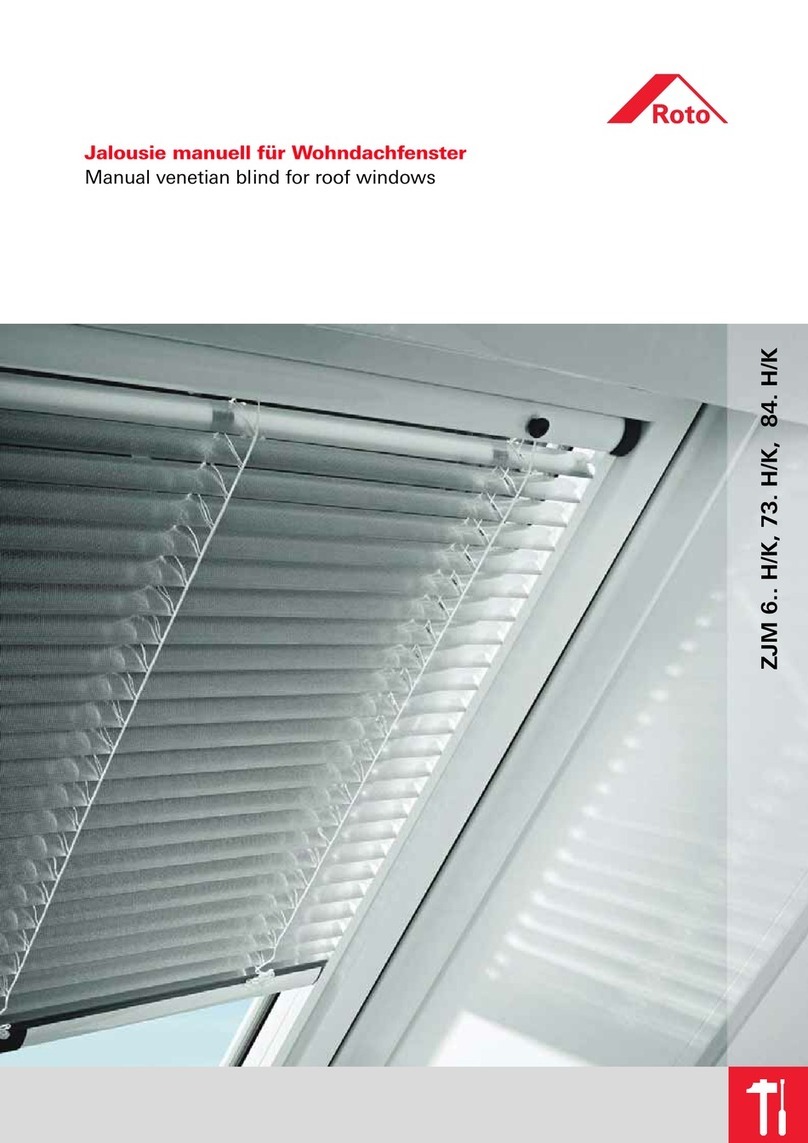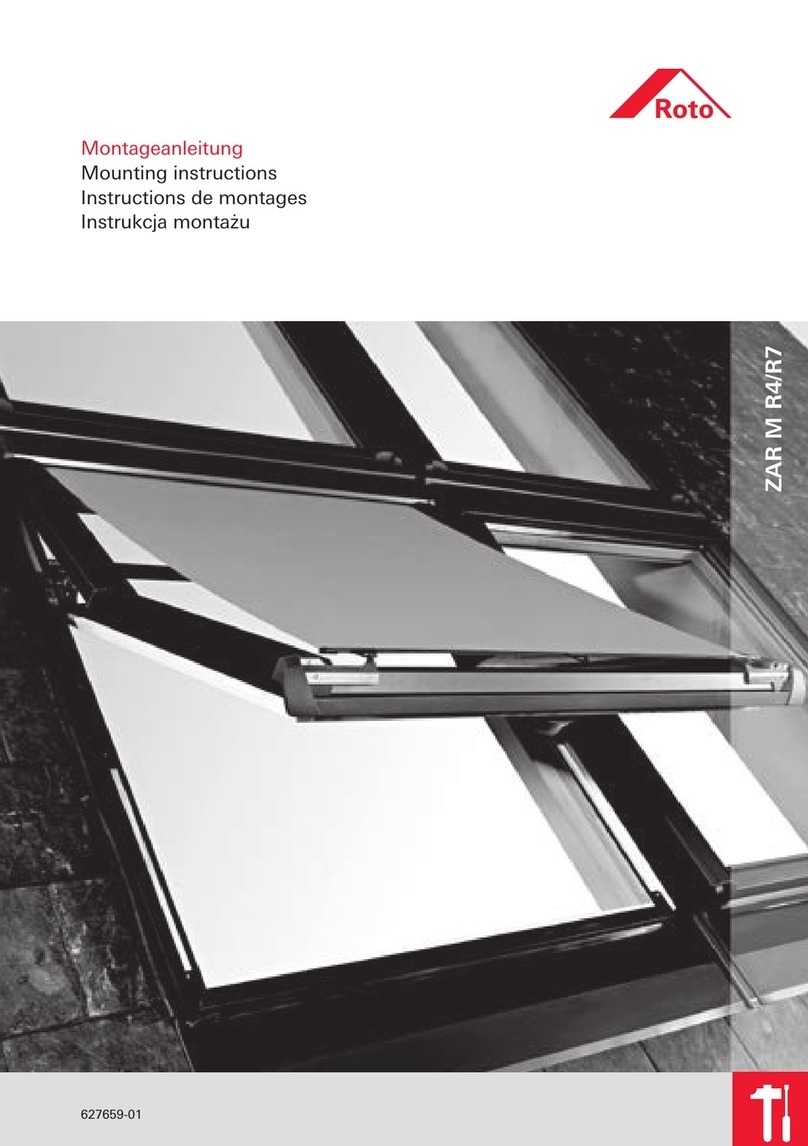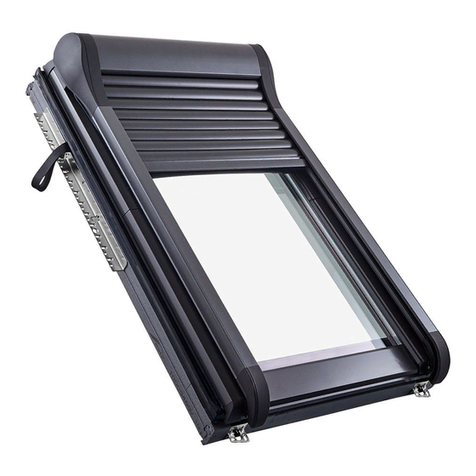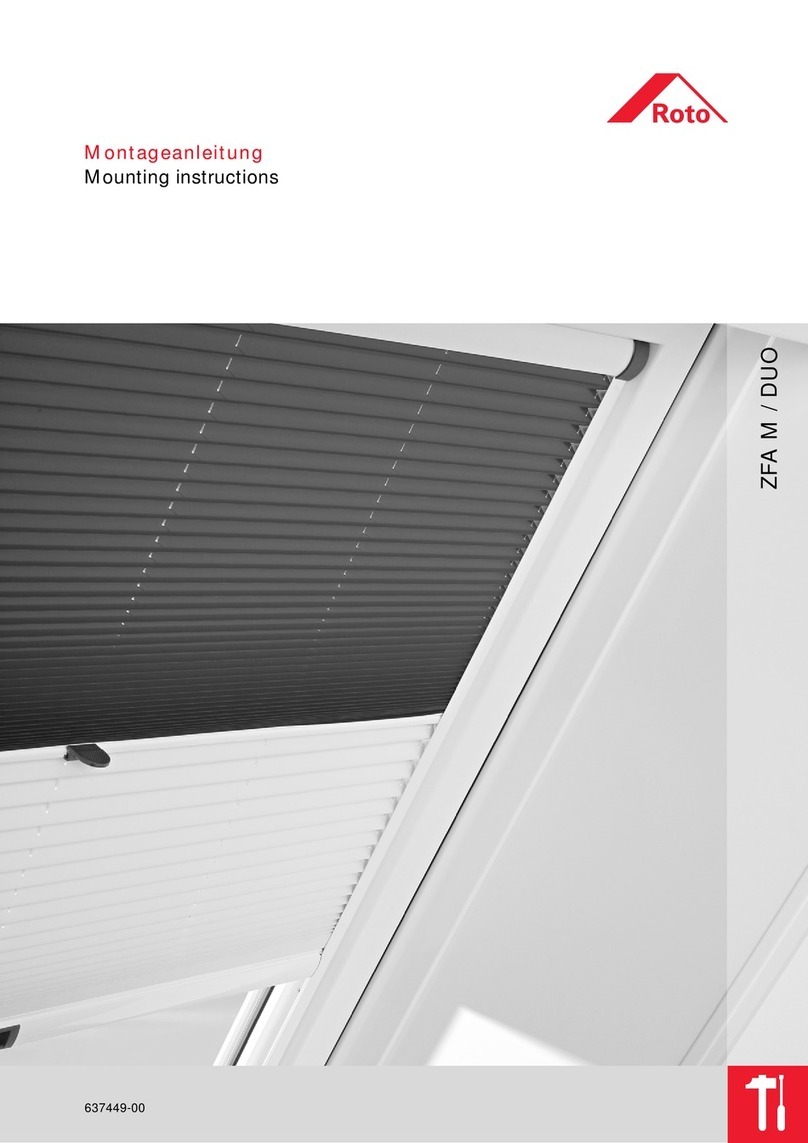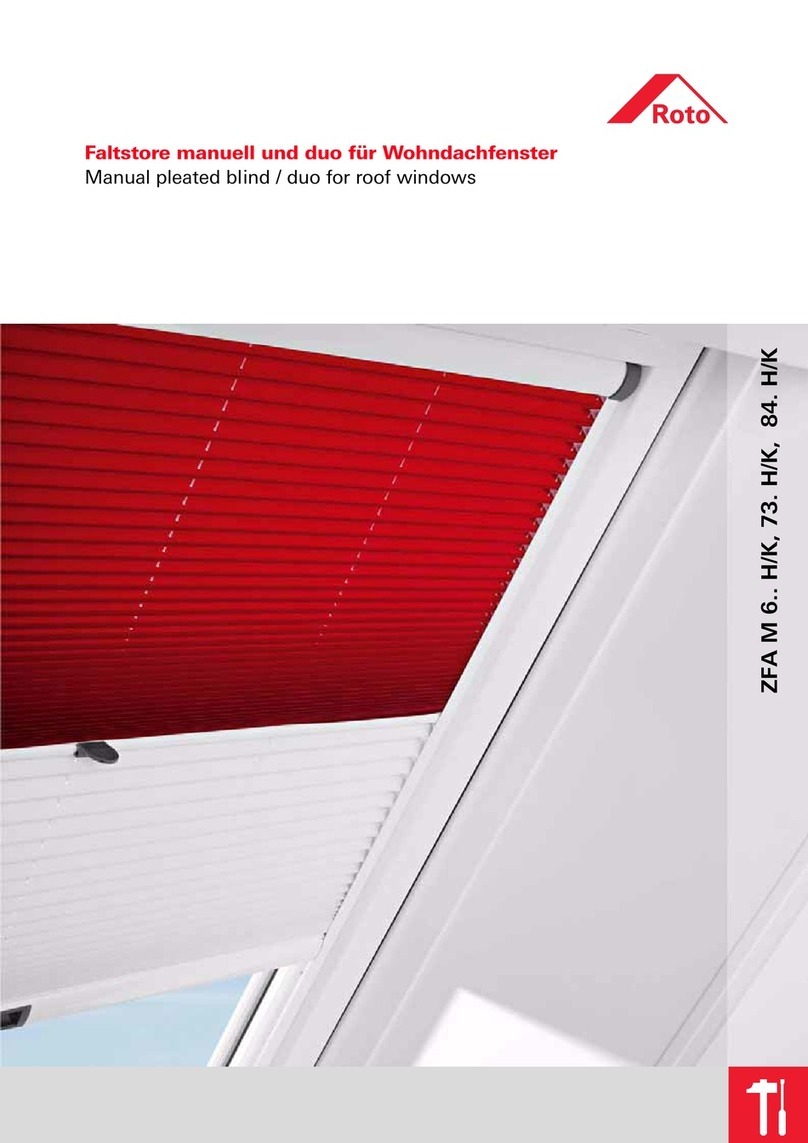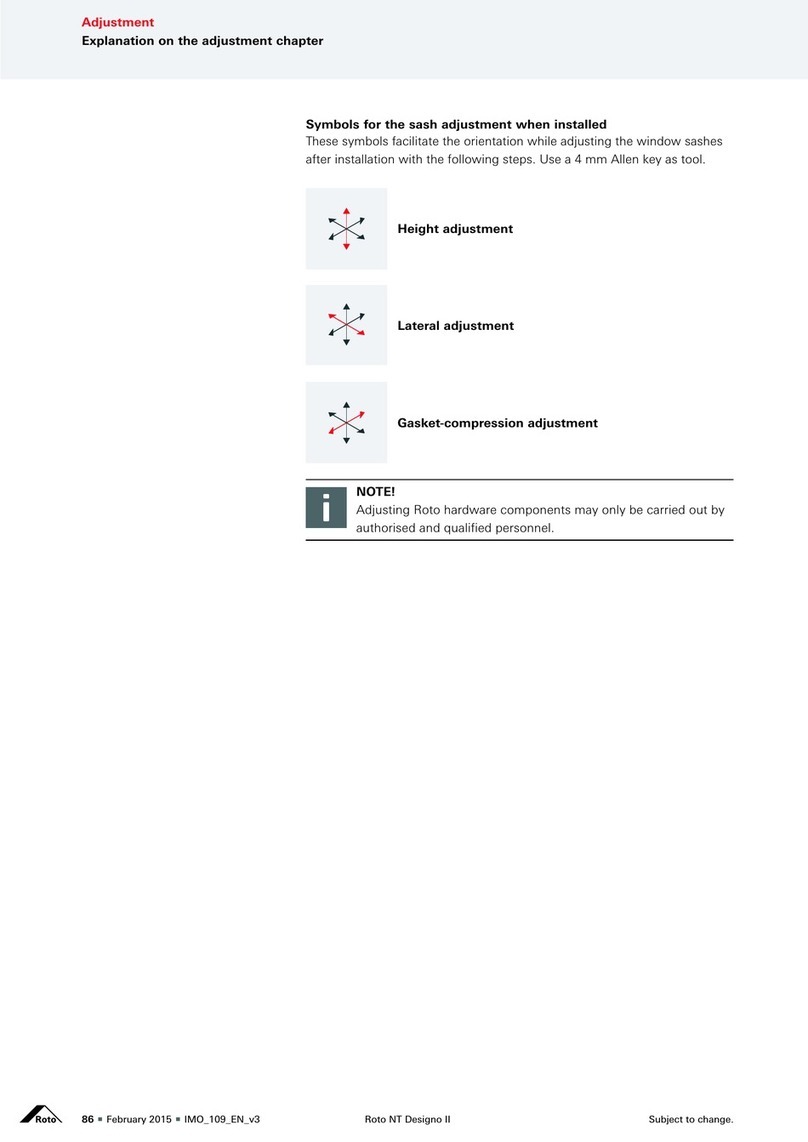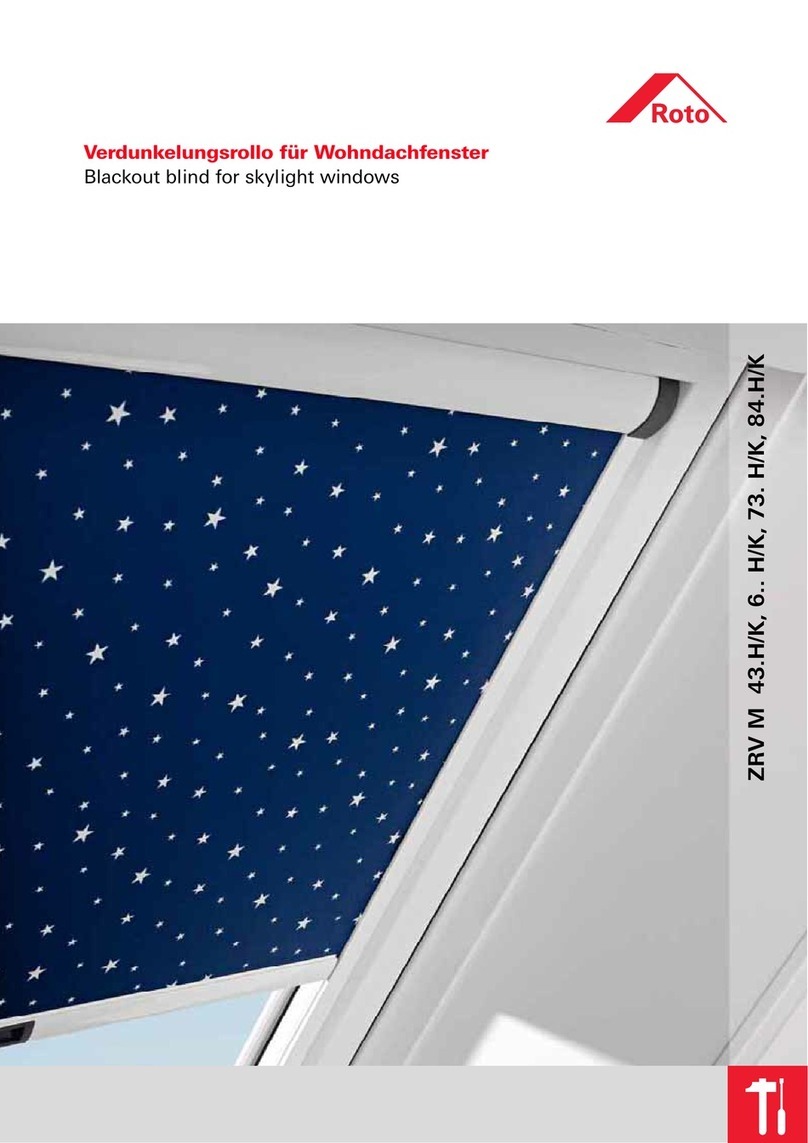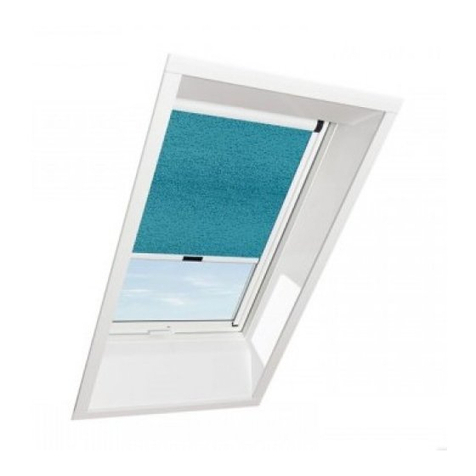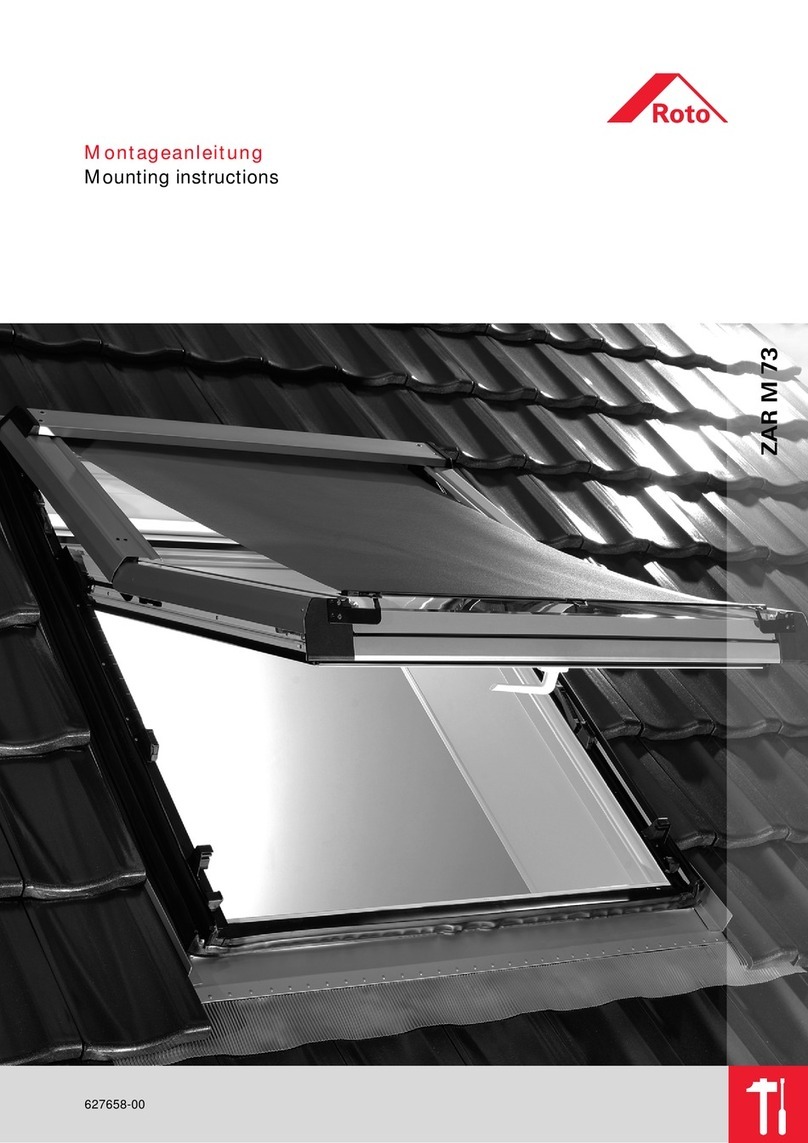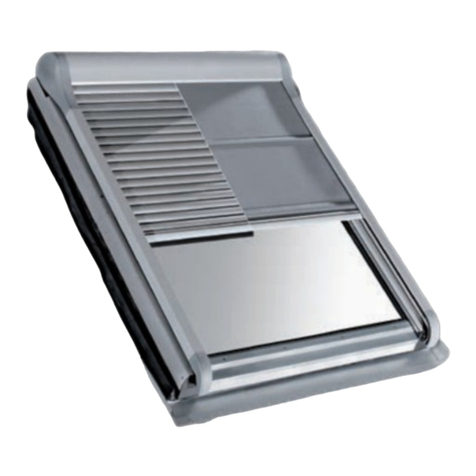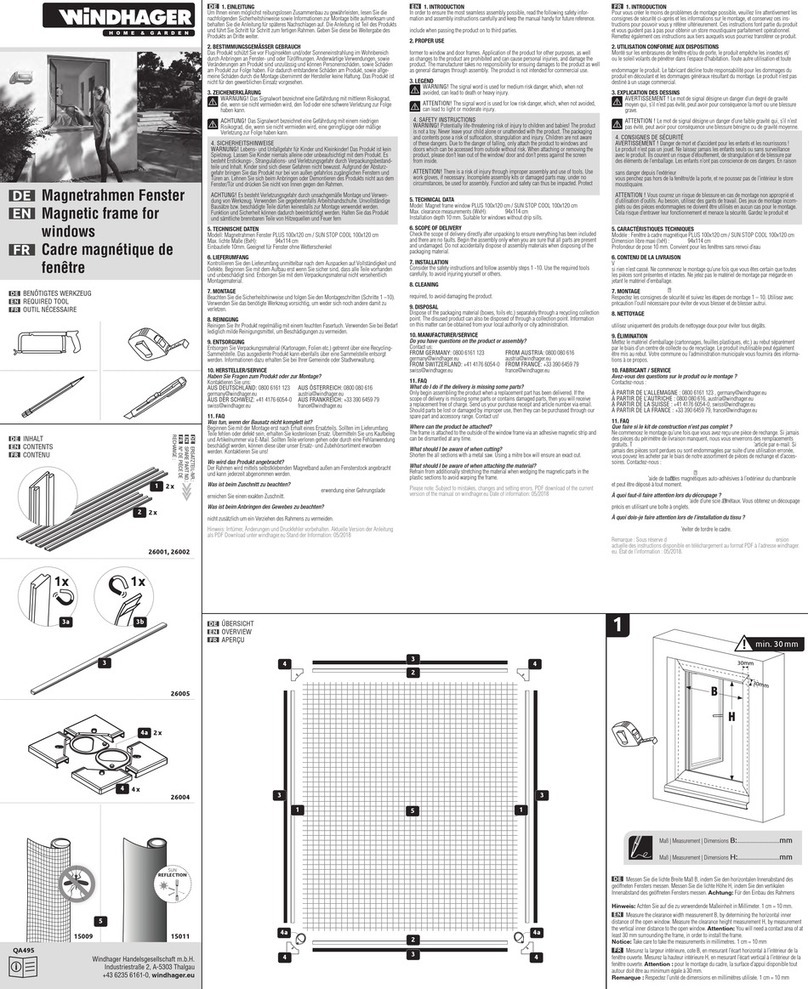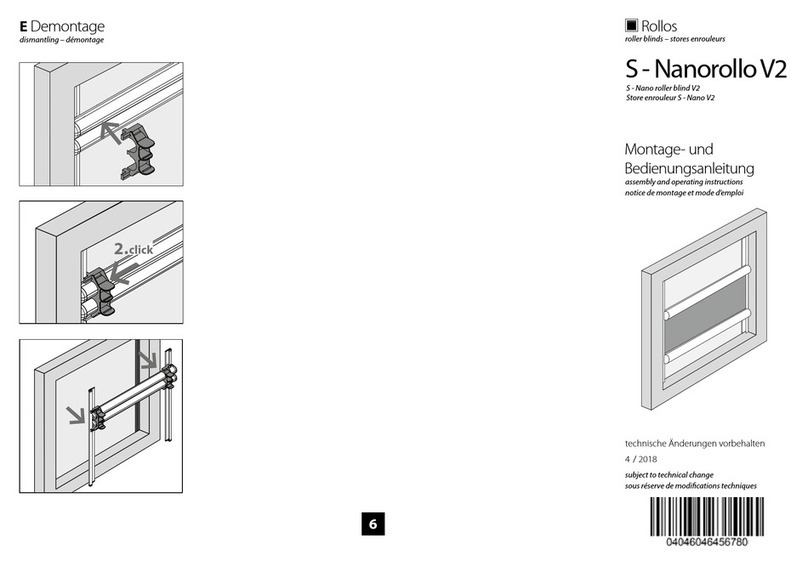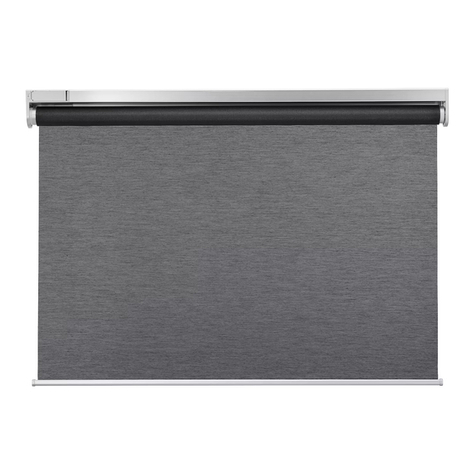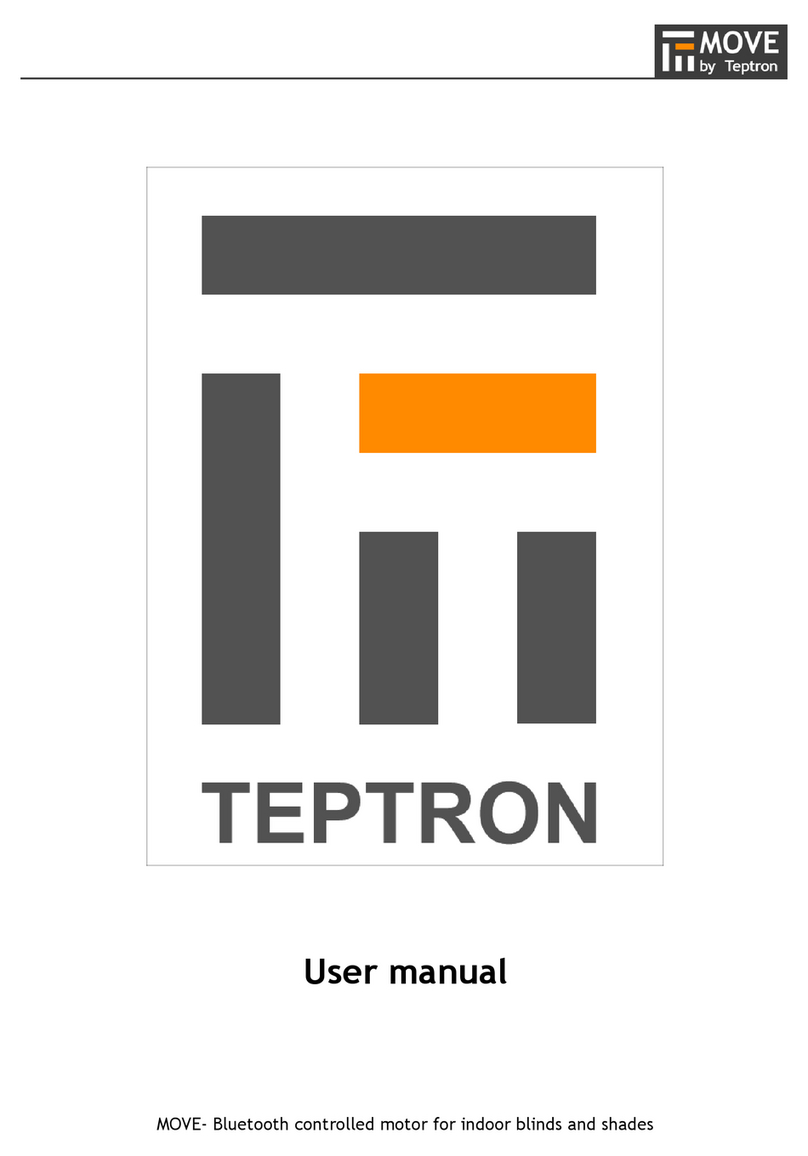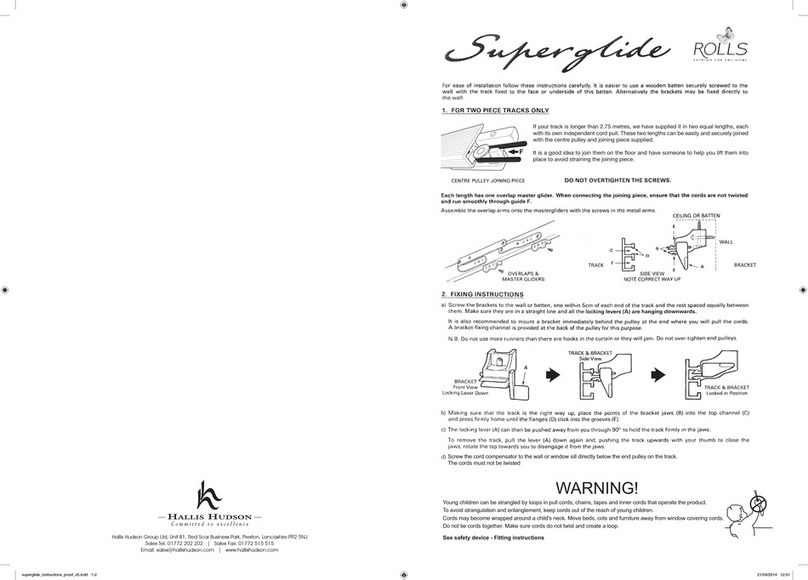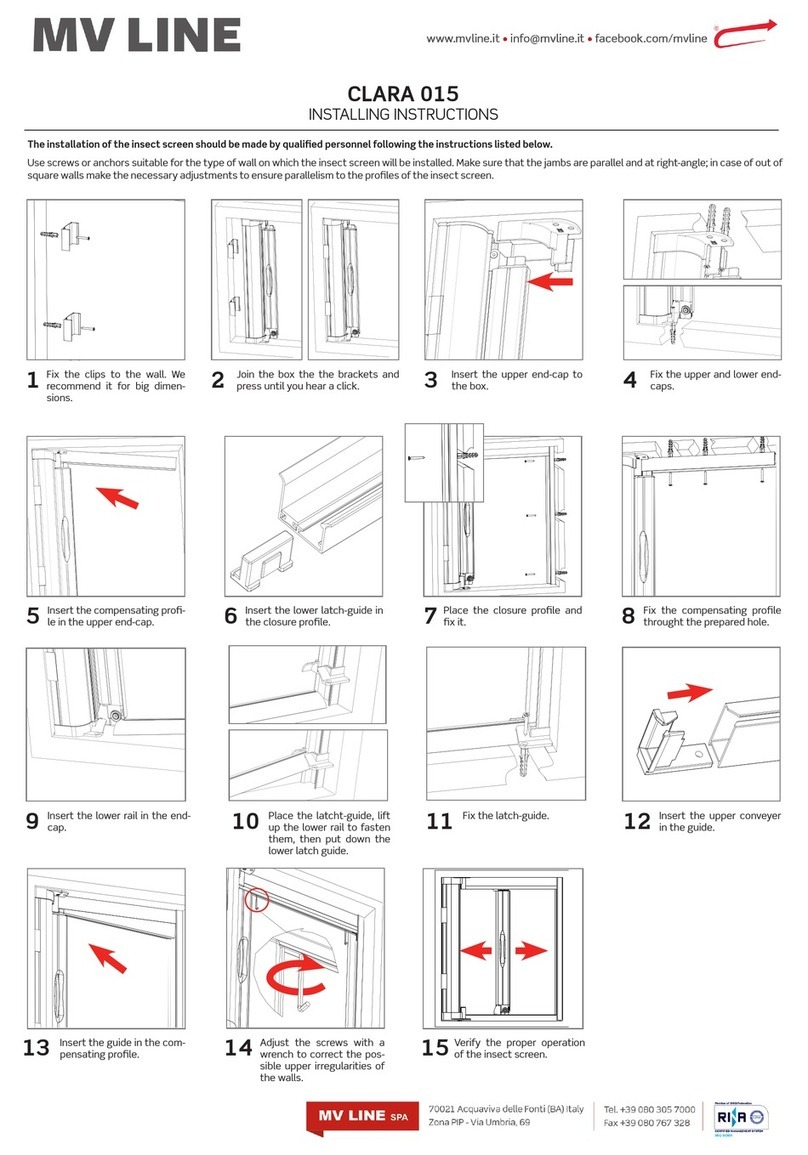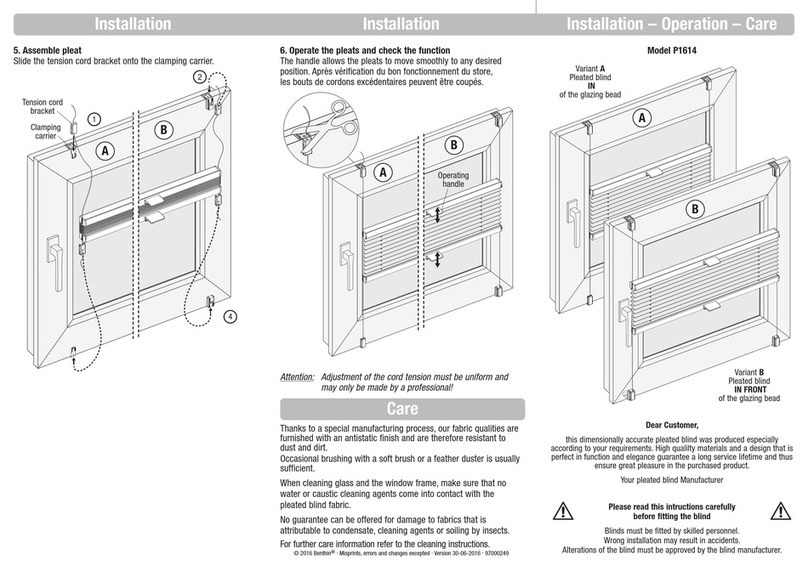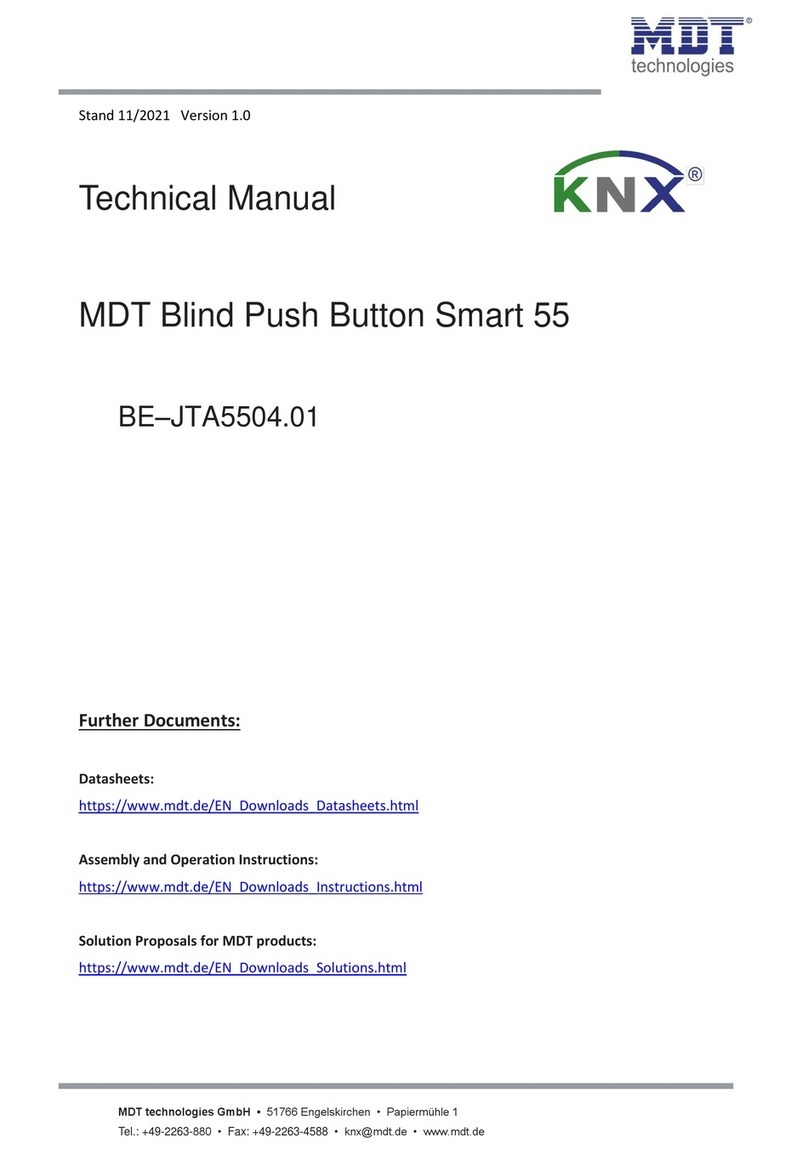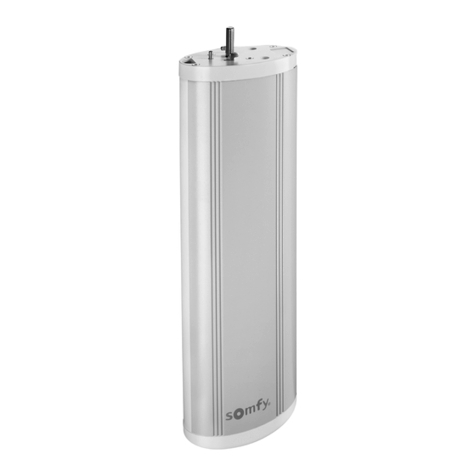
8
Consignes générales de sécurité
• Les instructions de montage s'adressent à des poseurs
qualifiés.
• Le poseur du produit doit posséder les connaissances
suivantes:
• Respect des règles de prévention des accidents
• Manipulation correcte des échelles et des aides à la
montée
• Mise en place correcte des éléments de fixation
• Évaluation des volumes bâtis
• Mise en service et utilisation du produit
• Si le poseur ne dispose pas de l'une de ces qualifications,
il faut mandater une entreprise de montage compé-
tente.
• Lire soigneusement ces instructions avant la pose et l'utili-
sation.
• Observer toutes les étapes de montage, les instructions et
des indications préconisées !
• Veiller à ce que ces instructions restent accessibles à tous
les utilisateurs.
• Conserver soigneusement ce manuel jusqu'à élimination
du produit.
• Remettre ces instructions au nouveau propriétaire en cas
de transmission du produit.
Utilisation conforme à l'usage prévu
Le store extérieur est destiné à l'utilisation en extérieur sur les
fenêtres de toit et sert à protéger de la chaleur.
Il est prévu exclusivement pour une pose et une utilisation
sur des fenêtres de toit ROTO.
Le store extérieur réfléchit et absorbe une grande partie du ra-
yonnement thermique, mais n'offre pas une protection à
100 % contre la chaleur (au sens physique).
Si le store extérieur est soumis à des charges, p. ex. en y ac-
crochant des objets, il peut être endommagé. C'est pourquoi
ceci est expressément interdit.
A l'exception des opérations décrites ici, aucune modifica-
tion, extension, transformation ni aucun travail
d'entretien ne peut être effectué sur le produit sans autorisa-
tion écrite préalable de ROTO.
Déballage / contrôle du contenu
de la livraison
(figure A1)
⚠Risque d'étouffement!
Les pièces en plastique, en polystyrène, les vis,
les petites pièces, etc. peuvent être dangereuses
pour les enfants s'ils jouent avec.
> Ne pas laisser traîner les emballages ni les pièces de
montage et les tenir hors de la portée des enfants et
des enfants en bas âge.
> Tenir les enfants à l'écart de l'emplacement de pose
pendant toute la durée du montage.
⚠Risque de blessures et de dommages matériels
dus à un store extérieur endommagé!
> Vérifiez l'état technique parfait du store extérieur avant
de le monter. Ne monter le produit que si celui-ci est en
parfait état technique.
• Eliminer le matériel d'emballage conformément aux dispo-
sitions locales.
• Contrôler le contenu de la livraison. Si des pièces man-
quent, les demander auprès de votre distributeur spécia-
lisé.
Préparation des outils et accessoires
(figure A2)
• Tournevis cruciforme
• Clé pour vis à six pans creux (ouverture de clé 5)
• Si nécessaire : aide à la montée (échelle d'appui)
Pose
(figure 1-7)
⚠Risque de chute !
La pose s'effectue en partie par la fenêtre
ouverte!
> Ne pas se pencher hors de la fenêtre de toit.
> Choisir un emplacement stable.
> N'utiliser que des aides à la montée stables, et offrant
un appui et une force de portée suffisants.
> En cas de travail à des hauteurs élevées, il faut impéra-
tivement utiliser des protections antichute appropri-
ées.
> Ne jamais se tenir au store extérieur ni au store en toile.
⚠Risque d'écrasement et de blessure dû au bascu-
lement de la fenêtre de toit !
> Protéger la fenêtre contre tout basculement intempes-
tif (voir les instructions de montage de la fenêtre de
toit).
> Pendant le basculement, tenir les mains éloignées de la
zone du châssis de la fenêtre.
⚠Risque de blessures dues aux chutes de pièces!
> Utiliser exclusivement le matériel livré et un matériel de
fixation adapté au matériel du cadre de la fenêtre.
> Ne jamais déposer d'outils et de matériel de fixation sur
les aides à la montée.
⚠Risque de chute due à la surprise !
En cas de contact de la toile du store avec la main
ou un objet, il peut se produire une décharge élec-
trostatique et des bruits (claquements,
grésillements)!
> Se tenir sur un support solide.
Réglage
(sans illustration)
Après la pose, aucun réglage ne s'avère nécessaire.
Français
9
!
Manœuvre
⚠L'orage, la neige et la pluie peuvent endommager
le store extérieur !
> Rentrer le store extérieur à temps avant des orages,
des intempéries, des fortes bourrasques de vent et des
chutes de neige. (la garantie ne couvre pas les dom-
mages dus aux intempéries!)
⚠Risque de détérioration de la toile de store mouil-
lée par la pluie!
> Remonter le store extérieur en cas de pluie ou ne pas
le déployer.
> Ne manœuvrer le store extérieur qu'une fois la toile du
store complètement sèche.
⚠Risque de détérioration de la toile
de store gelé !
Par temps froid, le store extérieur peut geler.
> Ne manœuvrer le store extérieur qu'après le dégel.
⚠Risque d'écrasement et de blessures!
> Maintenir la zone de déploiement et de rentrée libre de
tout obstacle fixe et mobile.
> Lors du déploiement et de la rentrée, ne pas toucher
les pièces mobiles et ne pas tirer sur la toile du store.
Fermeture du store extérieur :
(figure B1)
• Amener la fenêtre en position de nettoyage.
• Accrocher les œillets de la toile de store sur les
crochets.
• Fermer la fenêtre.
Ouverture du store extérieur:
(figure B2)
• Amener la fenêtre en position de nettoyage.
• Décrocher la toile du store des crochets.
• Fermer la fenêtre.
Entretien et maintenance
Entretien
(sans illustration)
⚠Un nettoyage incorrect peut peut entraîner des
dommages matériels.
> Ne pas utiliser de nettoyeur haute pression, de produits
à récurer ou d'éponges à récurer ni de solvants (p. ex.
l'alcool ou l'essence).
Pour une grande longévité, nous recommandons :
• de brosser avec précaution la toile du store au moins une
fois par.
• de veiller, lors de l'ouverture du store extérieur, à ne pas
entraîner de saletés (p.ex. feuilles, brindilles).
• de procéder au moins une fois par an au contrôle de fonc-
tionnement du store extérieur.
• de faire réparer les dommages à temps par un service ag-
réé.
Correction de la tension du mécanisme à ressort
(figure B3-B4)
Après une utilisation prolongée, le mécanisme à ressort peut
perdre en tension et nuire ainsi au fonctionnement du store
extérieur.
Si, lors de l'ouverture, la toile du store se déploie sans tension, il
faut corriger la tension du mécanisme à ressort.
Pièces de rechange, pièces d'usure,
réparation
(figure A1)
> Utiliser exclusivement les pièces de remplacement et
d'usure d'origine du fabricant.
> Ne faire réaliser les réparations que par un service ag-
réé.
Dépose et élimination
(sans illustration)
Les stores extérieurs ou les composants usagés ne doivent
pas être éliminés avec les ordures ménagères.
• Éliminer le store extérieur conformément aux prescriptions
locales.
Français
